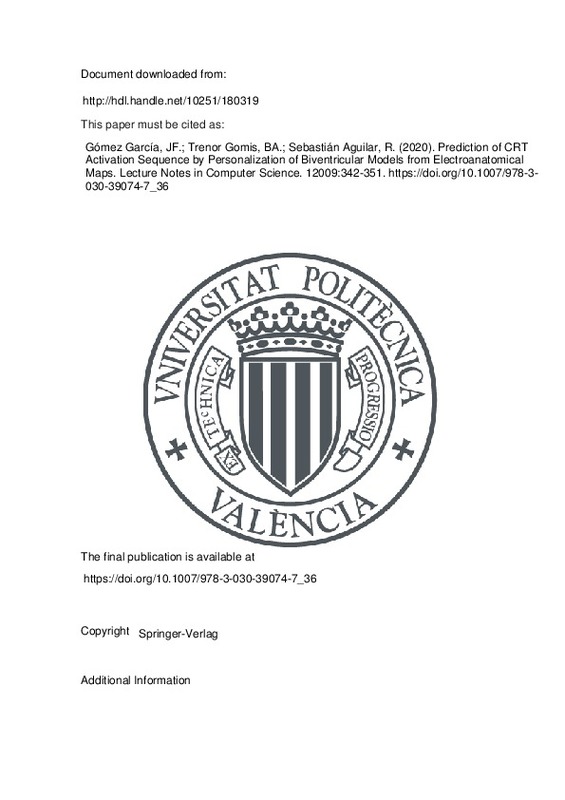JavaScript is disabled for your browser. Some features of this site may not work without it.
Buscar en RiuNet
Listar
Mi cuenta
Estadísticas
Ayuda RiuNet
Admin. UPV
Prediction of CRT Activation Sequence by Personalization of Biventricular Models from Electroanatomical Maps
Mostrar el registro completo del ítem
Gómez García, JF.; Trenor Gomis, BA.; Sebastián Aguilar, R. (2020). Prediction of CRT Activation Sequence by Personalization of Biventricular Models from Electroanatomical Maps. Lecture Notes in Computer Science. 12009:342-351. https://doi.org/10.1007/978-3-030-39074-7_36
Por favor, use este identificador para citar o enlazar este ítem: http://hdl.handle.net/10251/180319
Ficheros en el ítem
Metadatos del ítem
| Título: | Prediction of CRT Activation Sequence by Personalization of Biventricular Models from Electroanatomical Maps | |
| Autor: | Gómez García, Juan Francisco Sebastián Aguilar, Rafael | |
| Entidad UPV: |
|
|
| Fecha difusión: |
|
|
| Resumen: |
[EN] Optimization of lead placement and interventricular delay settings in patients under cardiac resynchronization therapy is a complex task that might benefit from prior information based on models. Biophysical models ...[+]
|
|
| Palabras clave: |
|
|
| Derechos de uso: | Reserva de todos los derechos | |
| Fuente: |
|
|
| DOI: |
|
|
| Editorial: |
|
|
| Versión del editor: | https://doi.org/10.1007/978-3-030-39074-7_36 | |
| Código del Proyecto: |
|
|
| Agradecimientos: |
This work was supported by the "Plan Estatal de Investigacion Cientifica y Tecnica y de Innovacion 2013-2016" from the Ministerio de Economia, Industria y Competitividad of Spain and Fondo Europeo de Desarrollo Regional ...[+]
|
|
| Tipo: |
|







![[Cerrado]](/themes/UPV/images/candado.png)


